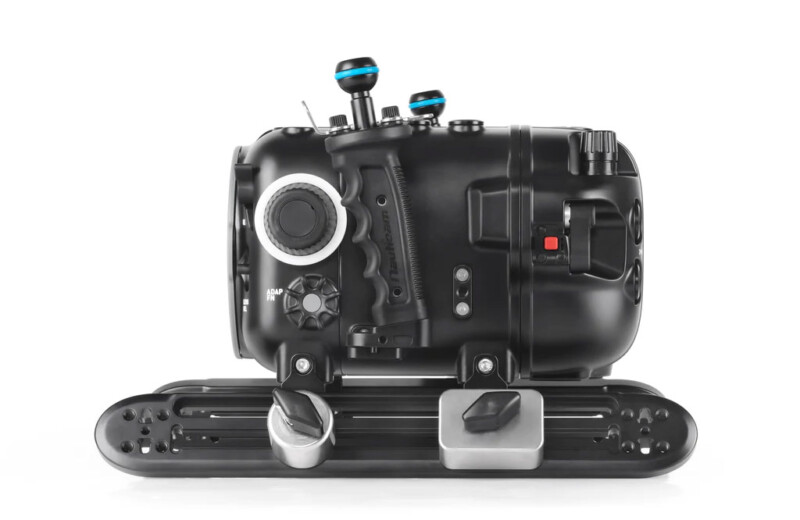For the Brave, Nauticam Now Has an Underwater Housing for the Red Komodo-X
![]()
Brave Red Komodo-X users have a new option for protecting their cameras while they dive to the depths. As News Shooter reports, Nauticam, one of the leading manufacturers of underwater camera housings, announced a new case for the high-end cinema camera.
Nauticam based the new case on its existing RED KOMODO housing. The company aimed to offer a compact system ideal for travel, with plenty of user-friendly features including a tool-free setup and teardown that users can complete in only a few minutes, allowing them to get in the water or to the next portion of a shoot faster. Additionally, the batteries can be replaced without removing the camera from the housing, which is extremely convenient given the complication of underwater housings.
The Nauticam Komodo-X housing uses the company’s existing N120 port system and those who already own N120 ports will thus be able to use them on this new version, making for an easier transition. Likewise, for those with multi-camera setups, this will allow the use of ports across multiple housings, which is a plus. It also makes using Nauticam’s premium optics lineup possible, including the WACP-1/2 and SMC-1/2.
The new Nauticam housing is also compatible with the Canon EF to EOS R adapter and the Canon EF to EOS R adapter with a Variable ND Filter. No matter which lenses cinematographers use, switching lenses doesn’t require tools and should be relatively straightforward. However, when changing from RF to EF lenses, they will need to remove the camera from the housing to change the adapter.
The Nauticam 16410 N120 to N200 Port Adapter and N200 Port System offer even more flexibility, making it possible to use cinema lenses with the Komodo-X housing. Once again, installation is easy and tool-free, allowing for fast lens swaps in the field, even if moving between DSLR and cinema lenses.

Nauticam prioritized intuitive controls on this new housing including adjustable handles with cinema-style zoom and focus knobs. There’s also a command wheel on the left side for adjusting ND filters. The top of the housing features a 1/4″-20 cheese plate for attaching accessories. It’s compatible with the Atomos Shinobi SDI, or the Ninja V monitors when using Nauticam’s NA-Shinobi-S or Nauticam Atomos Ninja V-S housing options.
![]()
All of those knobs allow for full operator control. However, Nauticam also included support for an ethernet surface feed in 5m and 45m lengths. There’s even room to install a small ethernet router in the housing itself, which allows for full remote control of the camera from the surface using the RedControl App.
Of course, underwater housing is only any good if it is watertight. While no underwater housing is perfect, Nauticam’s latest features its field-tested Vacuum Check and Leak Detection System to help notify you if (or when) things go wrong. These offer constant updates on the watertight status of the housing so users can limit damage if (or when) it springs a leak.
The alert system relies on a manual hand pump to create a slight vacuum within the housing. Then, a color-coded LED light, visible at the back of the housing, alerts users if the vacuum is failing. Likewise, leak detection is built-in, offering an audible and visible indication. The system is temperature compensated, which should prevent false alarms during changes in outside temperatures or from the camera heating up while recording.
Taking a high-end camera underwater calls for a trustworthy device, which results in steep prices for housing. It’s no real surprise then, that the new Nauticam KOMODO-X housing is priced at $9,665. For those with very good insurance, it’s available for purchase now through Nauticam’s website.
Image credits: Nauticam